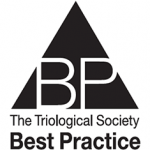The overall incidence of esophageal secondary malignancies is low in patients with HNSCC


The overall incidence of esophageal secondary malignancies is low in patients with HNSCC

The use of neuromodulators appears to be helpful in patients with chronic idiopathic/ neurogenic cough

The incidence of alteration in taste sensation with coblation lingual tonsillectomy, TORS tongue-base reduction, and submucosal lingualplasty is sufficiently high to warrant warning patients.

The majority of recurrences occur within the first two posttreatment years

TRIO Best Practice articles are brief, structured reviews designed to provide the busy clinician with a handy outline and reference for day-to-day clinical decision making. The ENTtoday summaries below include […]

Desensitization is cost-effective, with several high-quality studies demonstrating improved disease control

Available evidence suggests the clear safety of the bjork flap, but there is not enough of it to recommend it at this time

Topical beta-blocker therapy is a safe treatment for patients that meet a certain criteria

Hereditary hemorrhagic telangiectasia (HHT), also known as Osler-Weber-Rendu syndrome, often manifests with epistaxis.

Patients with T1 and T2N0 oral tongue cancer are likely to benefit a from specimen-driven margin assessment